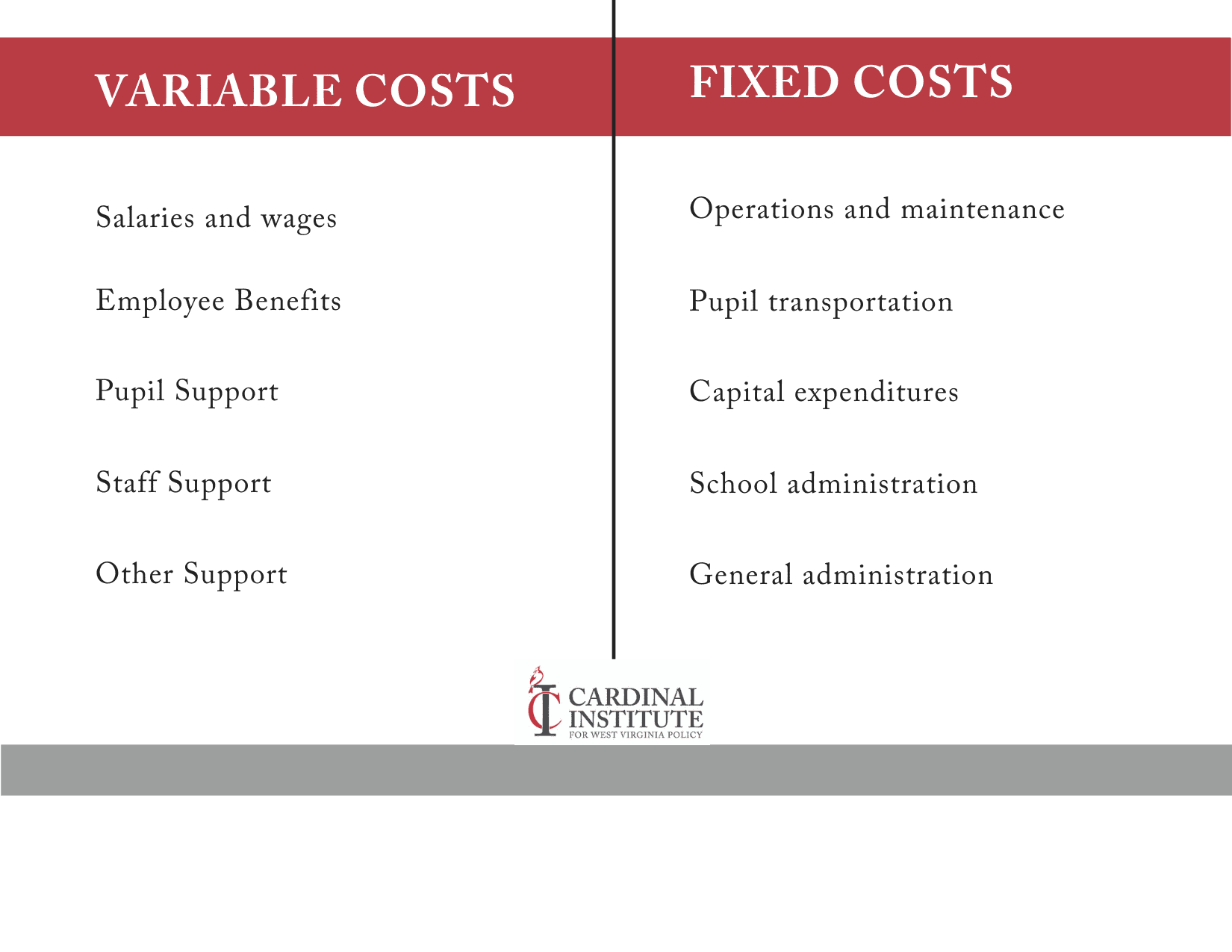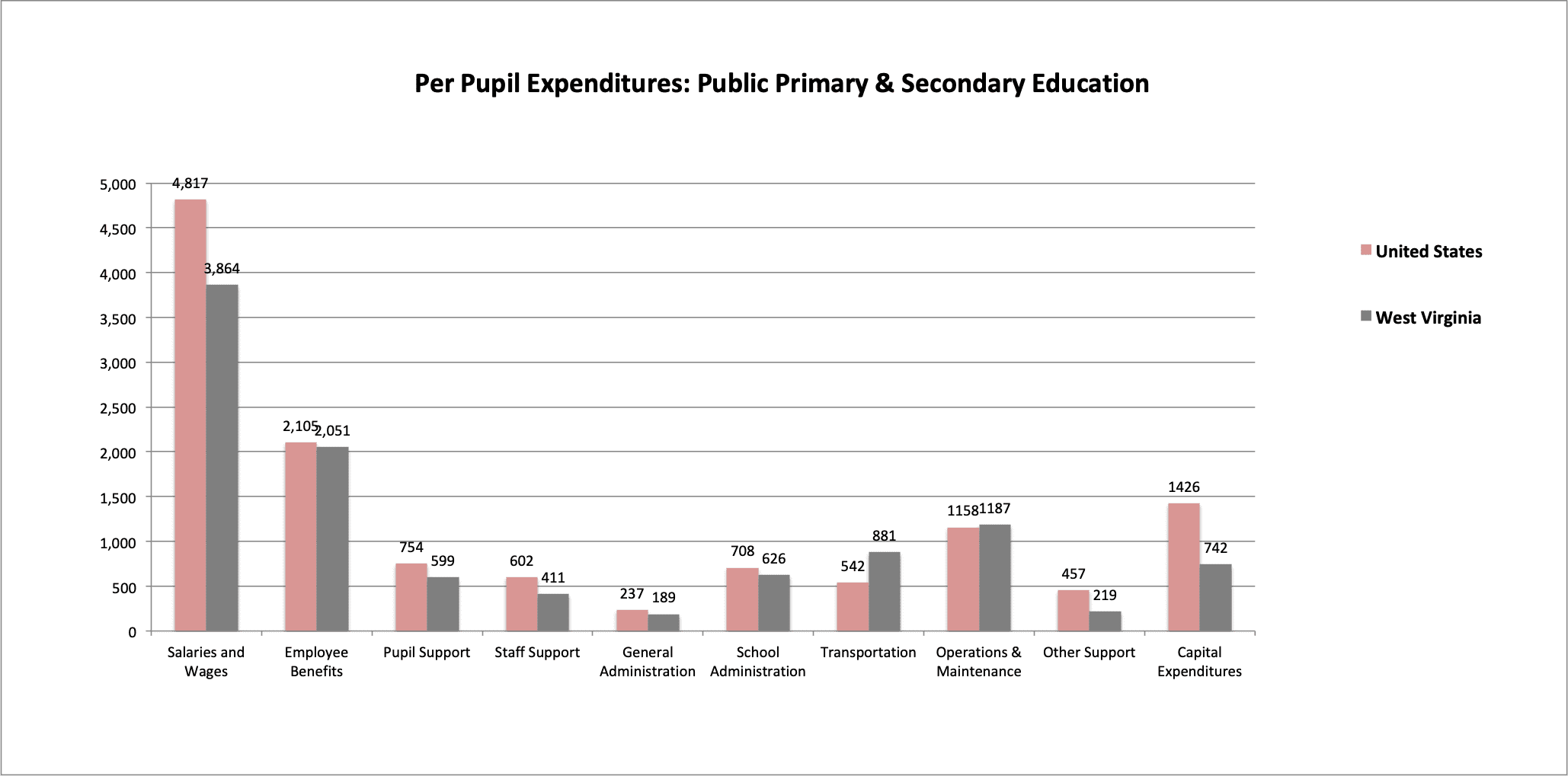
ECON 101 with Dr. JT: Education Costs & the Hope Scholarship
Cardinal Team
Education Costs & the Hope Scholarship
Amid all the talk about why lawmakers in West Virginia should or shouldn’t pass legislation that introduces Hope Scholarship education savings accounts to students and families across the Mountain State, one major point of contention always comes back to the almighty dollar – the costs of education in West Virginia.
One of the stronger criticisms tends to sound like:
“We can’t just drop the number of seats on the bus or reduce the heating and maintenance bills by a handful of kids if they leave the school.”
This invites us to pause a moment and consider a critical point about the nature of costs. They can’t all be considered the same way. In the broadest sense, education costs can be broken down into two categories: fixed and variable. These types of costs operate exactly as you would think. Let me explain with some examples.
Example of Fixed Costs
In your own household budget, the fixed costs are going to be things like your mortgage or rent, car payment, general savings, and if you’re like me and many other young adults – your student loan payment. You know exactly what these are going to cost each month, and those are fixtures in your budgeting plans.
Example of Variable Costs
The variable costs here include groceries, some utilities, and the catch-all category I refer to as the “fun-budget.” These aren’t always the same. You can change them through your own choices. Some examples of how your choices can affect costs:
- buying generic or brand name goods at the grocery store
- keeping the thermostat higher in summer and lower in winter to cut those utility costs
- shopping for clothes on the clearance rack or in thrift stores rather than buying new from a boutique, or
- choosing to cook more meals at home rather than dining out as often.
Fixed & Variable Education Costs And How They Work in West Virginia
In our school systems these fixed costs are building operations and maintenance, transportation, school buses, and other related capital expenditures. The variable costs are typically those associated with labor expenses. These could be the number of teachers, service personnel, and others employed in any given school building. Administrative staff are slightly more challenging to categorize as their numbers do vary with the size of the student body they serve. Although, those changes aren’t quite as responsive to student population changes as instructors or other direct support staff. For purposes of this discussion, we’ll count administrators among fixed education costs.
From both of the home budget and school setting examples, we can separate and respectively analyze these expenses. For example, in a household budget, one popular rule of thumb is the 50/30/20 rule. According to this rule, 50% of your expenses go toward needs, 30% toward wants, and 20% toward savings. From a very prudent perspective, we might consider a household budget to be 70% fixed costs and 30% variable costs based on this rule of thumb.
For education systems, the numbers don’t come out in quite so tidy chunks, but data collected by the US Census Bureau allows us to get a more granular breakdown of those education costs.
Education Costs in West Virginia
To begin, the data show that an average of $12,612 is spent per student in public elementary and secondary school systems. In West Virginia, that spending comes to $11,334 based on 2018 data from the U.S. Census Bureau.
Looking more closely at this data set, there are nine categories we should examine more closely to get a feel for the breakdown of fixed and variable costs associated with the money that follows each student to a school.


Using this more conservative breakdown where, again, administrative costs are counted as fixed, the proportions break down into:
| Fixed Costs | Variable Costs | |
| United States | 31.8% | 68.2% |
| West Virginia | 33.7% | 66.3% |
Prior research, published in 2012, is consistent with these proportions. http://www.edchoice.org/wp-content/uploads/2015/07/The-Fiscal-Effects-of-School-Choice-Programs.pdf
Following the categorical breakdown of fixed and variable costs detailed above:
| Fixed Costs | Variable Costs | |
| United States | $4,071 | $8,735 |
| West Virginia | $3,625 | $7,145 |
*Note: These figures do not exactly equal per pupil spending totals
How the Hope Scholarship Affects Education Costs
Coming back to concrete details about the Hope Scholarship program, reports and legislative testimony indicate that these accounts will direct $4,624 – the state portion of funding – of the total education dollars directly to families, should they choose to enroll in the program. The rest of the money – local and federal funding – remains with the school system.
A cursory glance at that Hope Scholarship amount demonstrates that it is clearly less than the variable costs associated with public school expenditures per student. In practice, this means that the local school system will remain able to cover the fixed costs such as building expenses and student transportation.
West Virginia’s Students Need the Hope Scholarship
In closing, the Hope Scholarship could be a lifeline to students and families who need a different educational setup to meet their unique, individual needs. The math indicates that we can provide those lifelines without harming students and families who opt to remain in their local, public schools.
Jessi Troyan is the Development and Policy Director for the Cardinal Institute for West Virginia. She also has her Ph.D. in Economics from George Mason University and is a proud alumna of West Virginia University and resident of Charleston, WV.
*To learn more about how the Hope Scholarship can help students thrive, visit the Cardinal’s Nest Blog!







